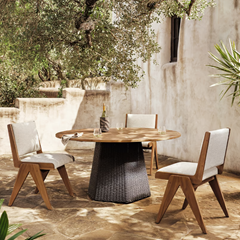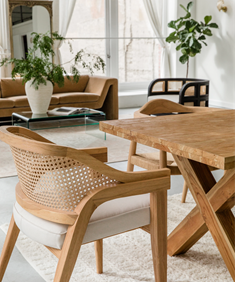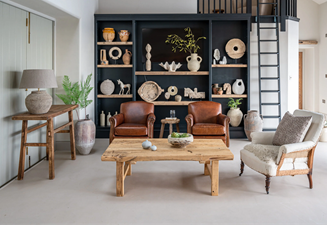As we become more aware of the environmental impact of our everyday choices, many people are turning to more sustainable alternatives in every aspect of life—and that includes furniture. Choosing sustainable furniture is not just about being eco-friendly; it’s about investing in pieces that have a lasting impact on both your home and the planet. From using renewable materials to embracing timeless designs, sustainable furniture is a conscious choice that not only enhances your living space but also contributes to a greener future.
Incorporating sustainable furniture into your home can feel like a challenge, but it doesn’t have to be. With some knowledge and the right approach, you can easily transform your space into an eco-conscious haven. Whether you’re looking to redecorate an entire room or just replace a few key pieces, there are plenty of stylish, durable, and environmentally responsible options available. Let’s explore how to bring sustainable furniture into your home, and why it’s such a worthwhile investment for both you and the planet.
Why Sustainable Furniture Is Important

Before diving into the specific ways to incorporate sustainable furniture, let’s talk about why it matters. Sustainable furniture is designed with minimizing environmental damage in mind, using materials and manufacturing processes that are less harmful and more durable. The furniture industry is known for contributing to deforestation, pollution, and waste, but eco-conscious furniture brands are leading the charge in creating sustainable, beautiful pieces that minimize these impacts.
When you choose sustainable furniture, you’re making a statement. You’re investing in products that:
- Minimize waste: Many sustainable pieces are made with recycled materials, repurposed wood, or upcycled fabric, reducing the need for raw materials and reducing the amount of waste that ends up in landfills.
- Support ethical labor practices: Sustainable furniture often comes from brands that prioritize fair wages and working conditions, ensuring that workers are treated well.
- Promote longevity: High-quality, sustainable furniture is built to last, meaning you’re not going to toss it out after a few years. This helps reduce the overall waste associated with fast furniture trends.
- Reduce harmful chemicals: Many eco-friendly furniture brands use non-toxic finishes, paints, and adhesives, which are better for both your health and the environment.
Key Considerations When Choosing Sustainable Furniture
Before you go out shopping for sustainable furniture, it’s important to know what makes a piece “sustainable.” Here are a few key factors to look for when selecting furniture that is both eco-friendly and stylish:
1. Materials Matter: Look for Eco-Friendly Options


Sustainable furniture is all about choosing materials that are renewable, recyclable, and non-toxic. Some of the most popular eco-friendly materials used in furniture making include:
- Reclaimed Wood: This is one of the most popular materials for sustainable furniture. Reclaimed wood is repurposed from old buildings, barns, or furniture. Not only does it prevent wood from being thrown away, but it also gives each piece a unique, rustic character.
- FSC Certification: When choosing wood-based furniture, one of the most important things to look for is FSC Certification. The Forest Stewardship Council (FSC) is an international organization that certifies forests that meet strict environmental, social, and economic standards. When a piece of furniture is made with FSC-certified wood, you can be sure that the wood was sourced responsibly, protecting forests from overharvesting and preserving biodiversity.
- Bamboo: Bamboo is an incredibly fast-growing, renewable resource that doesn’t require pesticides or fertilizers. It’s strong, durable, and perfect for furniture, especially pieces that need to withstand regular use like tables or chairs.
- Recycled Materials: Furniture made from recycled materials like glass, metal, and plastic is another great way to be eco-friendly. These materials reduce the need for virgin resources, lowering carbon emissions and energy consumption.
- Natural Fibers: Upholstered furniture made from organic cotton, hemp, or wool is not only soft but also environmentally friendly. These materials are biodegradable and require fewer pesticides than their synthetic counterparts.
- Sustainable Metals and Ceramics: Look for pieces made from responsibly sourced metals, such as recycled steel, and eco-friendly ceramics. These materials are often durable and easy to recycle at the end of their life.
2. Durability and Quality: Choose Timeless Designs


Sustainable furniture is designed to last, which means it should be built with quality craftsmanship and durable materials. This is an essential element to look for because durable furniture reduces the frequency of replacements, ultimately minimizing waste. Look for high-quality materials like hardwoods, metals, and sturdy fabrics that can withstand years of use without losing their appeal.
Timeless designs are also a great way to go. When you choose classic pieces that never go out of style, you won’t feel the need to replace them as trends change. For example, a well-crafted wooden dining table or a beautifully designed leather sofa can last for generations if properly cared for.
3. Non-Toxic Finishes: Protect Your Health and the Environment
The finishes, paints, and stains used in furniture can have a major impact on both the environment and your health. Traditional furniture finishes may contain harmful chemicals, such as formaldehyde, which can off-gas harmful toxins into your home.
When selecting sustainable furniture, choose pieces that are finished with non-toxic paints, stains, or oils. Natural oil finishes (like beeswax or linseed oil) or water-based paints are excellent choices for both your home’s air quality and the environment.
4. Upcycling and Repurposing: Give New Life to Old Furniture


Upcycling and repurposing are powerful ways to incorporate sustainability into your home. If you have old furniture, consider restoring it rather than throwing it away. A fresh coat of paint, new upholstery, or a simple structural fix can bring a tired piece back to life.
You can also repurpose items that might not typically be used as furniture. For example, you could turn an old ladder into a bookshelf or transform a vintage suitcase into a chic coffee table. Upcycling doesn’t just save money; it also reduces waste, giving your furniture a second life.
Ways to Incorporate Sustainable Furniture Into Your Home
Now that you understand the key elements of sustainable furniture, let’s explore some practical ways to incorporate eco-friendly pieces into your home.
1. Start with the Essentials: Sustainable Living Room Furniture

The living room is often the focal point of your home, so it’s a great place to begin integrating sustainable furniture. Look for sofas and chairs made with organic fabrics like cotton, hemp, or wool. Many sustainable furniture brands offer sofas with wooden frames made from reclaimed wood or responsibly harvested timber.
Consider also adding a coffee table made from repurposed wood, which adds texture and character to the space. If you’re looking for a statement piece, a sustainably crafted accent chair or side table can really elevate the room without compromising on eco-friendly values.
2. Sustainable Dining Furniture for a Green Dining Room


The dining room is another area where sustainable furniture can be easily incorporated. Look for dining tables made from reclaimed solid wood, which provide a sturdy, sustainable surface for meals. When selecting dining chairs, choose those made from non-toxic finishes and renewable materials.
Adding plants to your dining room is also an excellent way to bring in sustainability. Plants not only purify the air but also add a touch of life to your furniture setup. A small potted plant on your dining table or a large floor plant in the corner can complement the natural aesthetic of your eco-friendly dining furniture.
3. Sustainable Bedroom Pieces: Rest in Style

In the bedroom, sustainability is key to creating a restful, eco-conscious retreat. Opt for bed frames made from durable metals, which not only give your room a contemporary look but also minimize the need for frequent replacements. When choosing a mattress, look for organic or natural latex options that are free from toxic chemicals.
You can also add greenery to the bedroom by placing plants like near your bed. Not only do plants enhance the atmosphere, but they can also improve air quality and promote relaxation, making your bedroom a sanctuary for rest and rejuvenation.
4. Sustainable Outdoor Furniture: Eco-Friendly Alfresco Living


Don’t forget your outdoor spaces! Sustainable outdoor furniture is a great way to extend eco-friendly living into your garden, patio, or balcony. Look for outdoor furniture made from recycled materials such as plastics or wood. These materials are not only durable but weather-resistant, making them perfect for long-term outdoor use.
Adding plants like climbing ivy, fruit trees, or herb gardens around your outdoor seating area creates a harmonious connection between your furniture and nature. Consider hanging a few plants from the ceiling or using them as decorative centerpieces on your table to enhance the overall aesthetic of your outdoor oasis.
5. Mix Sustainable Furniture with Vintage Pieces

One of the best ways to create a sustainable home is to mix new sustainable furniture with vintage or antique items. Older pieces often have great craftsmanship and quality, making them perfect for incorporating into a modern sustainable home. Look for mid-century modern pieces, vintage sideboards, or retro chairs that have stood the test of time. Not only does this give the furniture pieces a second life, but it also adds a unique character to your home.
Conclusion: Sustainable Furniture for a Greener Future
Incorporating sustainable furniture into your home is more than just a trend—it’s a lifestyle choice that helps reduce your environmental impact and supports the planet’s future. By choosing eco-friendly materials, embracing quality craftsmanship, and mixing in plants to bring nature indoors, you can create a stylish, functional, and sustainable home.
As consumers, we have the power to drive change by making mindful choices in the products we buy. Sustainable furniture allows us to make a statement—one that reflects our values, supports ethical practices, and ultimately contributes to a healthier environment. So, start small, make intentional choices, and transform your home into a green haven that you can feel good about—today and for many years to come.

